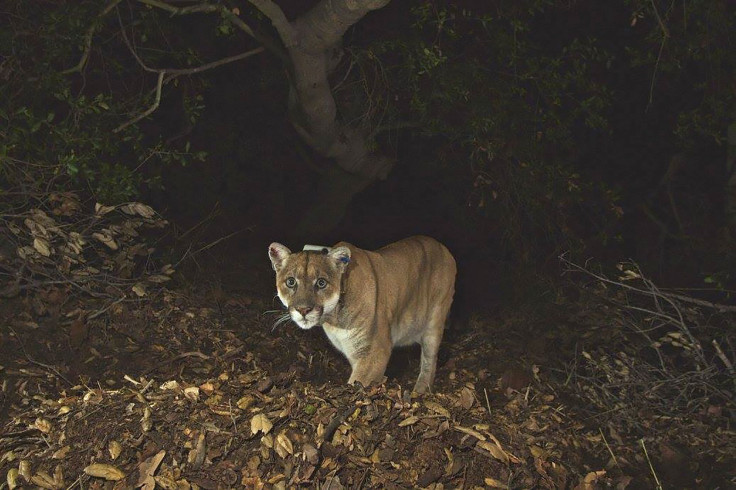Santa Monica Mountain Lions, Cut Off From Rest Of Their Species, Face Extinction

Hit by a loss in genetic diversity, mountain lions living in the Santa Monica Mountains in Southern California now face a 99.7 percent chance of extinction over the next 50 years, according to a new study published in the Proceedings of the Royal Society B.
Researchers who analyzed data regarding the number of mountain lions living in the area, their breeding options and the impact of inbreeding on a species found that the 15 pumas that currently inhabit a 150,000 acre stretch in the region are completely cut off from the rest of their species because of human-made obstructions, including several intersecting freeways.
As a result, the big cats have resorted to extensive inbreeding, which has made their gene pool less diverse than what’s needed to ensure their survival. As the researchers note, there is a 15 percent probability of extinction over 50 years — if inbreeding in the population stops immediately.
“However, our model also predicted the population will lose 40 to 57 percent of its heterozygosity in 50 years,” the authors wrote in the study. “When we reduced demographic parameters proportional to reductions documented in another wild population of mountain lions that experienced inbreeding depression, extinction probability rose to 99.7 percent.”
However, the short-term prognosis is still cheerful. Given that the population of the big cats in the region is holding steady, a slight increase in their numbers is expected in the next 25 years.
But that’s about it.
“If it just so happens one month that one [mountain lion] gets hit by a car and one dies of rodenticide poisoning, then all of a sudden you’re out of males,” study co-author Seth Riley, a wildlife ecologist for the park service, which manages the Santa Monica Mountains, told Los Angeles Times.
This is not the first time concerns have been raised over the loss of genetic diversity among the mountain lions in the region. In 2014, in a study published in the journal Current Biology, scientists stated that inbreeding among the big cats had brought down their genetic diversity to “dangerously low” levels — a phenomenon, they noted, would be “rare or nonexistent” if the lions had not been completely isolated.
“If wildlife connectivity is not considered and planned for, or improved in places like southern California where it has mostly been lost, large carnivores, which exist at very low densities and need to move great distances, will not persist,” Riley of the National Park Service, lead author of the 2014 study, said at the time.
So what can be done to increase their chances of survival?
A possible solution the researchers highlight is building a wildlife corridor — something like the proposed Liberty Canyon Wildlife Crossing — that allows the lions, and other animals, to enter and exit the Santa Monica Mountains. Even if one new lion enters the region every generation, it would be enough to boost the population’s genetic diversity, the researchers say.
“It doesn’t have to be all that much,” Riley told LA Times. “You don’t need a whole parade of lions coming across the freeway.”
© Copyright IBTimes 2024. All rights reserved.












